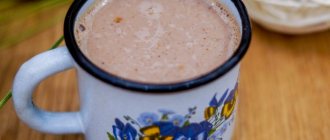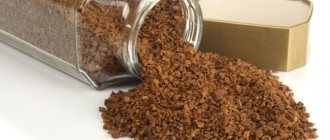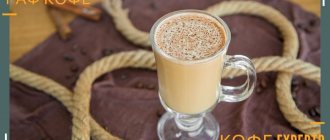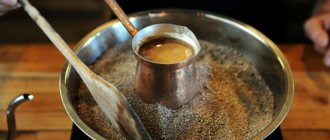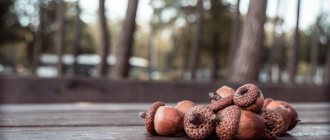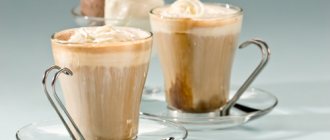There are coffee shops all over the world, but no city is more closely associated with the steaming drink than the Austrian capital. Many famous long-standing coffee shops exude incomparable charm. Countless coffee drinks make every Viennese tourist spoiled for choice. How brown beans came to Vienna is a fascinating and legendary story.
Glass of coffee, photo by Anzhelika Gaidar
Viennese coffee - what is it?
Espresso with the addition of cream or heated milk is known as Viennese mélange, a famous drink that first appeared in the Austrian capital. In coffee shops it is served in various variations - with cinnamon, spices, lemon zest, cognac and other additives.
History of appearance
Back in 1683, Vienna needed protection from Turkish troops who besieged the capital of Austria. Zaporozhye Cossack Yuri Kulchitsky volunteered to help deliver the letter to the King of Poland, John III Sobieski.
Knowledge of the Turkish language contributed to the execution of the plan: the Cossack managed to sneak into the enemy camp and pass himself off as a merchant. At night, Yuri escaped from the siege and reached the Polish king John III Sobieski. Vienna was liberated, and in gratitude, Yuri Kulchitsky was given ownership of the house, as well as bags of coffee beans. Soon the restaurant “Under the Blue Bottle” was opened. This is how the history of the popular Viennese drink began.
Calorie content of the drink
The overall nutritional and energy value of the drink is influenced by the method of preparation. Classic Viennese coffee contains only 2 kcal per 100 ml of drink. Supplemented with high-fat cream, alcohol or sugar, it is already considered high-calorie (up to 290 kcal).
With chocolate
What you will need:
- hot strong coffee – 150 ml;
- whipped cream – 40 ml;
- chocolate – 25 g;
- sugar – 5-7 g (1 tsp or to taste);
- cream – 15 ml (1 tbsp.);
- cocoa powder and cinnamon - a pinch.
Preparation:
- Melt the chocolate, being careful not to burn it. It “loves” to turn into a viscous state with constant stirring in a water bath.
- Mix melted chocolate with cream (15 ml).
- Add coffee to the resulting mixture. Don’t forget to stir constantly, literally whipping until foamy.
- Pour the chocolate-coffee drink into preheated cups. If necessary, add sugar and stir.
- Place the airy foam of whipped cream onto the coffee surface with a spoon. The final charm is a breeze of cinnamon and delicate scatterings of cocoa.
Viennese coffee does not tolerate delay. All three actions - cooking, kindling, whipping - must be performed almost simultaneously, quickly and smoothly. The chocolate should not have time to cool down.
The components of this recipe are sometimes replaced: sugar partially with powder, and chocolate with syrup. You can omit cinnamon altogether. And combine the “creamy decoration” with an openwork pattern of chocolate syrup.
Varieties of Viennese coffee
Traditional cafes in Vienna offer the drink in the following variations:
- Melange – hot milk is added to double espresso.
- Kleiner Schwarzer – classic strong black coffee.
- Kleiner Brauner is a drink in a small cup with milk added. A glass of cold water is served with it.
- Grosser Brauner – double brown espresso in a large cup.
- Einspaenner – Viennese coffee, distinguished by the addition of vanilla sugar and whipped cream. It is served in a glass.
- Wiener Melange – instead of a creamy “head” there is frothed milk.
- Kaiser (“Kaiser”) - milk is replaced with yolk.
- Mokka – strongly brewed.
Black gold of Austria
The Viennese like to call their coffee black gold and want to be treated as such.
We present 5 recipes for true classics of Viennese coffee.
You can use them to develop your imagination for other different options.
Big or Small black (mocha)
großer Schwarzer (“großer Schwarzer” or “big black”, also known as großer Mokka, big Black/Mocha) – double mocha in a large cup.
kleiner Schwarzer (kleiner Schwarzer or “little black”, also known as kleiner Mokka, small Black/Mocha) – a simple mocha in a small cup.
The basis and therefore the most important basic structure for real Viennese coffee drinks. This is black coffee, i.e. without sugar and milk. Currently it is prepared using an espresso machine. However, if you want to enjoy it the traditional way, you should use a Karlsbader pitcher.
Karlsbader jug
Ingredients for 1 cup:
- up to 8 grams of ground coffee
- tamper weight:
- from -15 to 20 kg
- preparation time: -20 to 30 seconds
Viennese melange
Viennese melange
It is called the “Holy Grail” of Viennese coffees. Consists of mocha with warm milk, a little water and a milk foam hood. If you prefer to add whipped cream instead, the melange will turn into "Franciscan coffee".
Take medium roast coffee beans and milk with 2.5–3.2% fat content.
Ingredients:
- 50 ml coffee;
- 50 ml milk;
- 1 tsp. Sahara;
- cream, sugar, honey, cinnamon, cocoa powder, grated chocolate - to taste.
Cooking method:
- Brew coffee. Sweeten the coffee if desired.
- Whisk the milk. Pour coffee and milk into a heated cup or glass.
- Sprinkle the surface of the drink with cinnamon, cocoa powder or grated chocolate.
Zarenkaffee (Royal Coffee)
Royal coffee
Zarenkaffee (Royal coffee) - strong espresso under a cap of yolk whipped with sugar.
Perhaps the most unusual coffee feature on our list is the strong espresso, which is topped with a whipped and sweetened egg yolk shortly before serving.
Single horse
Cappuccino served with powdered sugar takes its name from a one-horse cart.
Einspänner - “Einspänner”. In the old days, a cart drawn by one horse was called that. It is not clear why, but coffee was also later called, which is a double espresso (but also mocha) with a lot of whipped cream, and cocoa on top of it. It is served in large transparent glasses.
Or there is such an explanation for the name of the drink: that is, it means “coachman”, so named because of the coachmen’s love for such coffee: they held the glass in one hand, the reins in the other, and the coffee remained hot for a long time under the thick cream.
Maria Theresia or Maria Teresa coffee
Maria Theresia coffee
The Empress of Viennese coffee is made from a large mocha with a dash of powdered sugar and whipped cream with orange zest.
It's a mocha with orange liqueur, whipped cream and colorful powdered sugar. The drink is named after the Austrian Empress Maria Theresa; she preferred coffee prepared according to this recipe.
Fiaker or fiacre
Fiaker is a large mocha in a glass with a lot of sugar and the addition of plum brandy or rum.
If you want to enjoy a shot of coffee, you should choose a fiaker. It consists of a large mocha with lots of sugar, 2ml butter or rum and a cherry on top.
Composition of Viennese coffee
The classic drink contains medium-roasted grains, natural cream with a fat content of no more than 25%, and vanilla sugar to taste.
Other ingredients include:
- grated dark chocolate,
- cinnamon,
- honey,
- egg yolk,
- alcohol,
- lemon and orange zest, etc.
Classic recipe
Ingredients:
- black coffee – 1 serving;
- whipped cream – 1-2 tbsp. l.;
- sugar (to taste).
How to cook:
- Pour freshly prepared coffee into a preheated cup.
- Add sugar and stir.
- Place the cream on the coffee surface with a “corrugated cap”. If desired, decorate with grains of orange zest, nuts, and a gentle “wind” of cinnamon.
Drink ingredients
The recipe for the original Viennese drink involves the use of the following ingredients:
- ground coffee – 2 tsp;
- bottled water – 100 ml;
- cream – 20 ml;
- sugar – 25 g.
Coffee beans
The quality of the beans plays a big role in the preparation of a hot drink. The criteria for their selection are the country of origin, variety, appearance and degree of roasting.
It is better to use ground coffee immediately before cooking, and using pure drinking coffee will ensure its pleasant taste.
Cream
To get a fluffy head for decoration, use natural high-fat cream. Adding vanilla will help improve their taste. Special cans of ready-made cream are widely used today.
Additional recommendations
Following a number of tips will help improve the taste of the finished drink:
- Grind the beans immediately before making coffee. This will make it more aromatic and the taste will be richer.
- Use distilled water. Tap liquids have a negative impact on taste.
- To enhance the flavor, add a small amount of salt when making espresso.
- The taste will be more pleasant if you use brown sugar instead of white.
Regular consumption of Viennese melange is not recommended. The drink is high in calories and increases blood glucose levels. It is best to take it in the morning so that caffeine does not interfere with sleep.
Viennese coffee preparation technology
The correct way to prepare the classic version of the drink is as follows: brew espresso, then pour it into a cup for tea or cappuccino. Add 1 tsp. spoon of sugar, stir. Gently place pre-whipped cream on top and decorate with topping.
In Turk
Brewing coffee in Turks is considered an ancient Eastern tradition. For preparation, use a copper vessel with a long handle.
Pour 2 tsp into the turk, or cezve. ground coffee, pour cold water and heat without bringing to a boil. Then the drink is filtered and sugar is added. Then add cream and sprinkle grated chocolate on top.
In the coffee machine
Many lovers of an invigorating drink prefer to use a device for automatically preparing it. First of all, classic espresso is brewed in a coffee machine. Then milk is poured into a special container, sugar is added, and a fluffy foam is whipped up. Pour the drink into a large wide cup and spread cream on top. Decorate with grated chocolate.
other methods
In addition to cooking in a Turk, there are several other popular ways of brewing coffee.
In the French press
It is better to brew espresso in a French press using freshly ground beans. Filtered water will promote good taste.
Pre-rinse the flask, add the required amount of coffee, add 30 ml of water, and leave for several minutes. Then add hot water (70 ml), add sugar, milk and mix. Leave for five minutes, then lower the piston and pour the resulting drink into a cup. Spread whipped cream on top.
In a vacuum coffee maker
This method of preparing melange is used all over the world. To do this, fill the bottom round flask with water up to the mark. The upper part of the device is removed from the stand and placed on the lower container, tightly closing the lid. Place the device on the stove and start cooking.
As the water boils, the water at the bottom of the device rises and mixes with the coffee mixture. This takes about 4 minutes, after which the device is removed from the stove and placed on a dry surface. Coffee is poured into cups and sugar and cream are added to taste.
In the Aeropress
Coffee lovers often use the AeroPress, a hand-held device for preparing drinks.
Before use, assemble the device, drying the internal parts - the chamber and the piston, otherwise the pressure will be low. Boil 200 ml of clean water in a separate bowl. Pour 15 g of freshly ground coffee into an Aeropress, add hot water, stir, then leave for a minute. After which the device is turned over and the piston is smoothly lowered, pouring the finished drink into the cup. Top with whipped cream and honey.
Helpful cooking tips
To prepare the drink, you must follow the rules and take into account certain nuances that will make Viennese coffee the best drink you have ever tasted.
So:
- The beans are ground only immediately before preparing the coffee base. Otherwise, after standing and evaporating, the taste and aroma will not be as rich as possible;
- water is an important component, the poor quality of which will ruin the entire taste, then no additional ingredients will save it. Use only purified water;
- It is necessary to brew coffee only over low heat, in a Turkish pot (an alternative is a coffee machine, coffee maker);
- the taste of the drink will become much better and more pleasant if you replace granulated sugar with cane sugar;
- a small pinch of salt added while brewing Viennese coffee will help to fully reveal the coffee aroma;
- Immediately after the coffee boils, remove it from the heat and then return it back. The procedure is repeated 4-5 times. This enhances the aroma and increases the strength.
The history of white coffee: linguistics and a little marketing
Far, far away, in Southeast Asia, there is an amazing country, divided into two parts by the sea. It is with these words that I would like to begin the story about the history of white coffee. We will leave fairy-tale motifs to the lot of writers, and we ourselves will turn to the facts, especially since they are very interesting in themselves.
How it all began?
The place of action is Southeast Asia, the time of action is the 19th century. Malaysia's wealth was created in the depths of the tin mines. Mostly immigrants from China worked for them. The work was hard, exhausting and unhealthy.
To invigorate the spirit and body, the Chinese drank a lot of coffee, roasting fresh beans themselves. Endemic poverty required the use of the cheapest food products, in particular low-grade coffee with a coarse and bitter taste.
It is not known who was the first to come up with the idea of adding a little palm margarine obtained from oil processing to the roasted coffee beans, but the idea quickly caught on and became widespread.
The resulting beans gave an infusion with a pleasant, slightly sweet taste, and the oily note softened the coffee bitterness even more effectively.
This drink was called white coffee. The Chinese used a special hieroglyph to designate the method of roasting grains. This hieroglyph is translated into Russian and other languages as “white”.
The modern recipe plays on the historical name and adds condensed milk or cream to the drink to give it the appropriate color.
The Chinese also had a “black” method of roasting coffee beans, which is indicated by the corresponding hieroglyph. The grains are fried along with sugar and wheat in pure palm oil.
White coffee is regular lightly roasted coffee beans with palm margarine. The method was invented more than 100 years ago in order to soften the harsh taste of cheap, low-quality coffee.
White coffee: today's day
Why has there suddenly been such an increased interest in white coffee in the last decade? Yes, so closely that the Malaysian Ipoh, where the drink is very popular, was solemnly called the “city of white coffee”?
- The reason is simple. Malaysia is a country where tourists generate an important source of income, so their interest must be supported by all available means.
- The national drink is quite suitable as an additional tourist incentive. Therefore, traditional Ipoh white coffee has become the object of active promotion.
- There are a lot of Chinese in the city of Ipoh itself. It is not surprising that the descendants of Chinese emigrants, who invented roasting coffee beans on cheap palm margarine, preserved both the recipe and its name. This is where the famous “white coffee” brand came from.
- A striking marketing move was the presentation of white coffee at WorldExpo 2010 in Shanghai. It was declared the national drink and aroused general interest. A beautiful legend about the city of white coffee completed the picture. And now tourists specially travel to Ipoh to taste a drink made from coffee beans fried in palm margarine.
But this is not the end of the story. Based on the traditional recipe, an instant drink was created, to which dry cream and sugar were added. This kind of ersatz is designed specifically for tourists; it is served to gullible visitors in many cafes in Malaysia.
Competent marketing, the use of successful linguistics and a little imagination gave the world another “new product” - white coffee from Malaysia.
How is white coffee prepared?
Legends and inspired advertising aside, how is Ipoh white coffee prepared?
- Arabica, Robusta and Liberica are mixed for it. The proportions of the mixture are chosen arbitrarily, probably based on the availability of raw materials.
- The grains are lightly roasted with the addition of palm margarine.
- Then they are cooled, ground, and a not very strong drink is brewed from them.
- Condensed milk is added to it at the rate of 1 tablespoon per 120-150 ml of coffee. Instead of condensed milk, you can put cream.
- The resulting drink has a thick, creamy taste with sweet notes. May have a toffee candy flavor. Coffee is not at all strong, but it helps restore strength due to the increased content of glucose and fat.
White coffee is made from the most common beans; there is no special variety.
